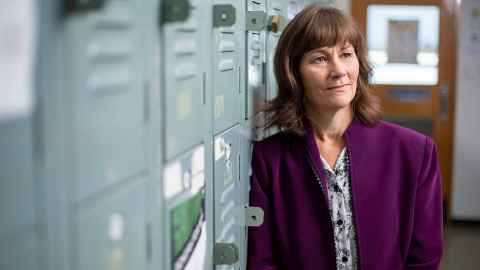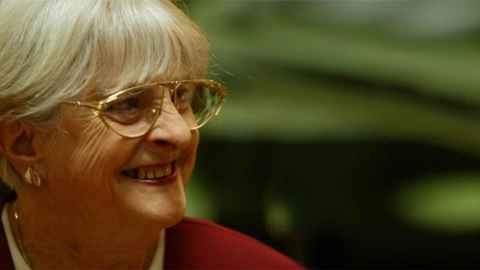Inside the Reading Wars
30 June 2021
There is a national debate about how best to teach children to read and write against the backdrop of international comparisons that show a decline in our children’s literacy.

Reversing the slide
'Inside the 'Reading Wars' is the first in a three-part series. In the second part, Deciphering the decline, Professor Stuart McNaughton canvases the many potential reasons for the decline in literacy. The final part, Literacy needs a life course revolution, outlines an evidence-based approach to reversing the decline.
When international large-scale assessments of reading ability began in the 1990s, New Zealand school students did well, scoring in the top five or 10 of nations. PISA, the Programme for International Student Assessment undertaken by the OECD in more than 90 countries, takes a snapshot of 15 years olds at regular intervals. PIRLS, the Progress in International Reading Study does the same for Year 5 students in more than 35 countries.
The story from these international assessments is one of decline in literacy for New Zealand school students. Thirty years after the initial assessments New Zealand pupils rank about average, which means an increasing proportion lag further behind. If literacy is the bedrock for a country’s aspirations for a knowledge economy, what does this mean for how children are taught to read?
Dr Rebecca Jesson is Associate Professor at the Faculty of Education and Social Work at the University of Auckland. Her research encompasses how teachers develop ways to improve literacy teaching by looking at evidence of students’ strengths and areas of need. She says it’s important to look at the wider story to be gleaned from the international literacy assessments.
“Within that general average we have students who compete with the best and we have those who are struggling. We can look at the assessments as a strategic guide for how we need to manage education resources. There is concern that we aren’t hitting the high-level skills assessed by the surveys as we should.”
The decline is cause for much soul-searching in education circles and sparks robust academic debate. In the media, the ‘Reading Wars’ have resurfaced.
The decline is cause for much soul-searching in education circles and sparks robust academic debate. In the media, the ‘Reading Wars’ have resurfaced. Proponents on both sides argue for the benefit of one approach, and the risk of the alternative. Typically, the ‘war’ is characterised as a face-off between whole language and phonics.
Whole language theory describes learning to read and write as a natural process for most children, very much like learning to talk. If children are immersed in a rich environment of texts and language, are read to, and share in reading with others, they absorb the meaning and context of the written word in a multitude of ways through their time with parents, teachers and whānau.
Phonics supporters see reading as something that requires children to be taught how to decode how different groups of letters form the sounds that in turn make up complete words. Here literacy is like learning a code where the sound of words is represented by phonemes. By learning to master the code, children piece parts of words into complete words and complete words into sentences. Whole language sees learning as an organic, multi-faceted process. Phonics advocates for giving children a systematic and sequential way to learn.
Jesson and her colleagues in the Faculty reject the simplistic characterisations of an ‘either or’ approach. “We would say that part of what it means to be a reader is engagement and enjoyment in the meaning and context of words and sentences, but we would also say that students need a range of skills, including but not limited to phonemic skills.”
She does not disagree that children need to know about how letters make sounds but with the multitude of irregular words in English, children also need to be able to think at other levels. “Working out the sound is always part of learning and part of any approach, but it isn’t the only strategy children can use. We want them to think about how it sounds as they read, but also be thinking about what the words look like, and what pictures are being created in their heads and what those mean.”
Jesson and colleagues focus on the child as an active problem solver. They see reading and writing as a process involving multiple parts of the brain. The approach reflects evidence from brain research that we use a series of networks to find context and meaning in the world. The internal networks link the parts of the brain where we analyse symbols and store information to where imagination and emotions reside. For Jesson, the role of the teacher is to understand what children know, in order to plan appropriately. “Since the 1960s, we have known the importance of the role of the teacher, whatever the methods and materials,” she argues.

A major influence on educational thinking about literacy was the research of globally renowned Professor Marie Clay of the faculty. Clay, who died in 2007, left a significant body of work and is perhaps best known for the creation of the Reading Recovery programme from the late 1970s, work that has since been adopted internationally.
This programme has become shorthand for criticism of whole language theory, and an argument for the need to explicitly introduce phonics teaching. But Clay was clear about the role and purpose of Reading Recovery. She referred to the programme as “…like a dose of antibiotics, taken only when essential, after professional assessment, given as a full course of treatment, and varied to suit the precise condition of each individual.” *
Reading Recovery is an evidence-based programme of one-to-one support for six-year-olds who are having problems with early literacy. More than half of New Zealand’s primary schools offer a Reading Recovery teacher who tutors students facing hurdles in literacy. The teaching takes 30 minutes a day, five times a week for between 15 and 20 weeks.
The programme ‘recovers’ about 80 to 85 percent of the children screened as having problems reading and writing during the first years of school. The short, intensive and tailored burst of teaching has been described by Clay as like giving an athlete individual coaching, alongside the regular ‘team training’ in the classroom.
The programme promises no more than to return 80 to 85 percent of those children experiencing difficulties to the average reading and writing skills for their age. It also identifies and refers on children who need more specialised help.
Clay was clear about what Reading Recovery could and could not do.
“No one claimed that Reading Recovery would be an effective solution to anything but the learning problems of the lowest achievers in the second year of school; no one claimed it would improve the mean scores of the age cohort; no one claimed that it would provide the answers to all literacy difficulties; no one claimed its theory to hold for all literacy learning.” *
If we want to shift literacy and maths and sciences, we know that this is going to need a far bigger initiative.
Reading Recovery aims to turn six-year-olds with poor literacy into competent 7-year-old readers. “Sound school reading programmes for 8-18-year olds are still necessary to take full advantage of the foundation skills that Reading Recovery establishes,” she wrote. *
Reading Recovery continues to work well for a small percentage of early learners finding difficulty. But Jesson notes the larger picture requires more research to flesh out what is happening and how best to ensure children are confident critical thinkers able to read and write alongside the best in the world.
“We aren’t going to change the literacy outcomes for all New Zealand children by working with a few students facing difficulty. If we want to shift literacy and maths and sciences, we know that this is going to need a far bigger initiative.”
Story by Gilbert Wong
Main researcher portrait by Elise Manahan
The Challenge is a continuing series from the University of Auckland about how researchers are helping to tackle some of the world's biggest challenges. To republish this article please contact: gilbert.wong@auckland.ac.nz
